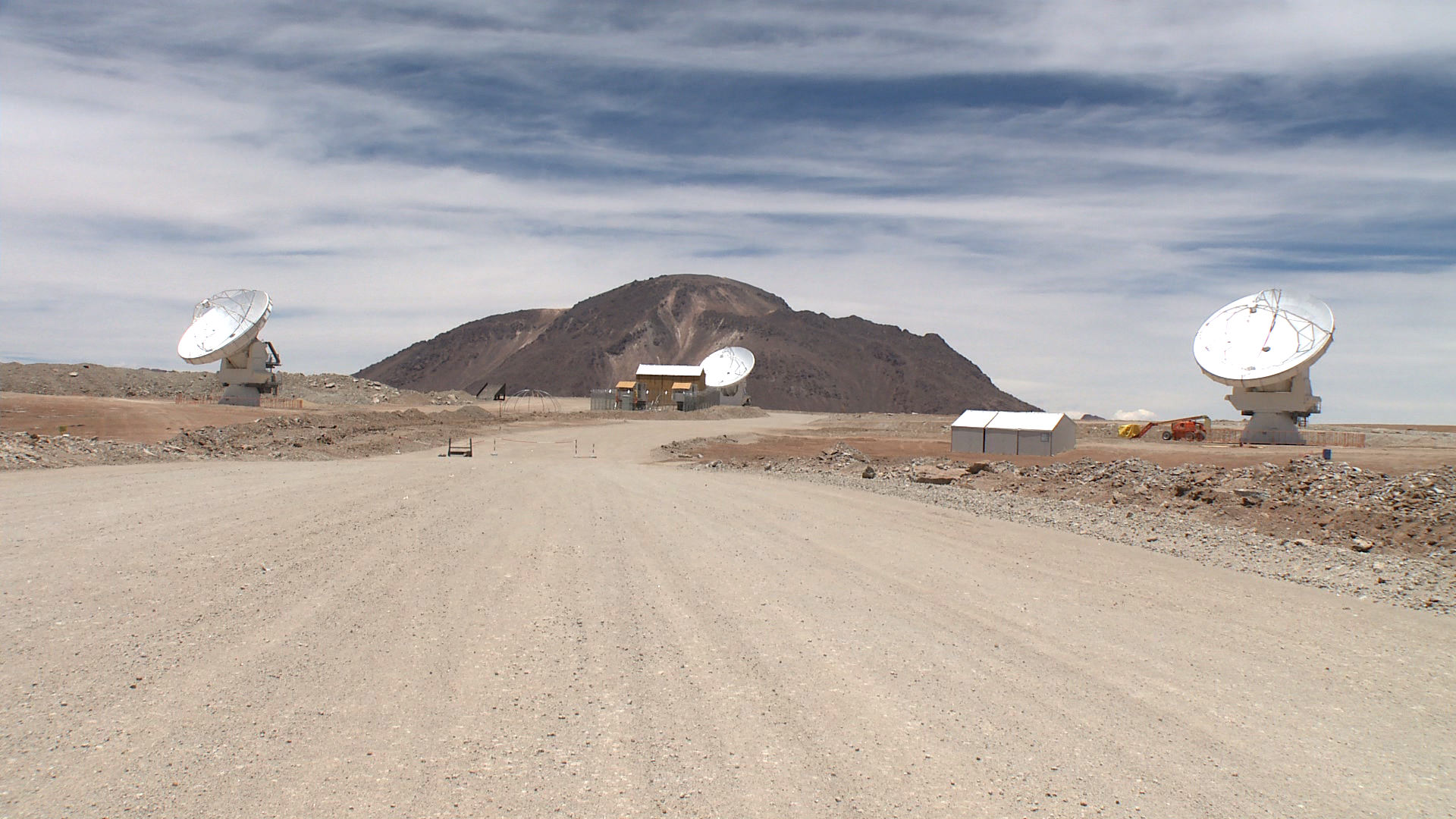Well, they’re 1/22 of the way there: the Atacama Large Millimeter/submillimeter Array (ALMA), planned to be one of the largest ground-based observatories in the world, successfully linked 3 of its 66 antennas together. This is the next step in working out all of the bugs associated with linking together the whole array, which should happen sometime in 2012.
ALMA is a “microwave” telescope array that will be the largest such ground-based observatory in the world once it is completely online. Telescopes like ALMA are called interferometers because they use the principle of very-long baseline interferometry – by linking separate telescopes together, a larger telescope of the effective resolution of the distance between the separate elements is achieved.
We reported on the first image taken by two of the antennas back in November. Information from a pair of the antennas was gathered to test the electronic functioning of the system, but errors from the system itself and those that creep in because of the atmosphere were weeded out by this latest test that included a third antenna. This test is called a “closure phase”, essentially the self-calibration of the antennas in terms of reconciling the information they are taking in with the signals present from noise.
Fred Lo, director of the National Radio Astronomy Observatory (NRAO) – which is the contributing organization of North America to the ALMA array – said of the test in a press release,”This successful test shows that we are well on the way to providing the clear, sharp ALMA images that will open a whole new window for observing the Universe. We look forward to imaging stars and planets as well as galaxies in their formation processes.”
ALMA can gather information in the electromagnetic spectrum at a wavelength that is less than 1 millimeter. Because the planned array is so large, it will eventually be able to resolve unprecedented images of some of the first galaxies to form after the Big Bang, and will also be able to capture the formation of planets around stars, as well as information on the late stages in the life of stars.
ALMA is located in the Atacama desert in Chile at about 5,000 meters (16,500 feet) above sea level. This high and dry location allows the telescope to receive more of the light in the submillimeter; water vapor in the atmosphere of the Earth absorbs light in this part of the spectrum.
Source: NRAO press release

